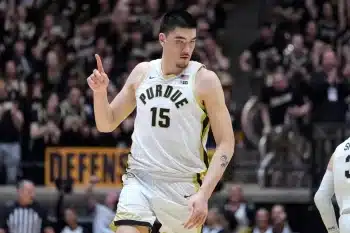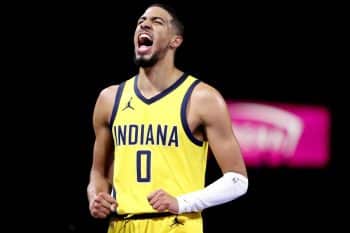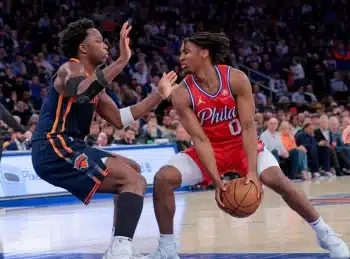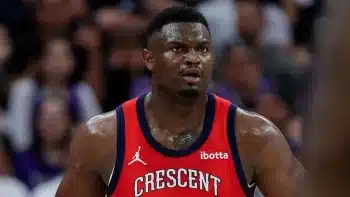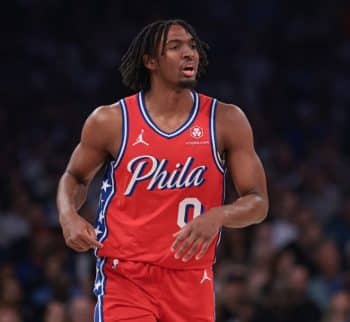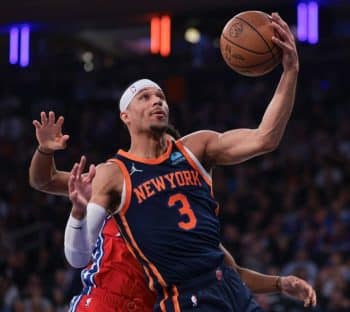NBA
Zach LaVine, Charting a Path Toward Analytics Superstardom

The widespread hand-wringing about Zach LaVine’s stated hesitance to shirk mid-range jumpers in favor of shots at the rim and from beyond the arc was largely overblown.
While the Chicago Bulls would no doubt prefer he publicly embrace the coaching staff’s plan this season to further prioritize high-value field goal attempts, the truth is that LaVine has gradually been cutting long twos from his game for years. His share of shots that came from mid-range last season was 17.8 percent, a career-low mark that’s dwindled on an annual basis ever since he entered the league in 2014-15.
It’s not like LaVine openly flaunted the Bulls’ preference to hunt efficient shots and employ a more egalitarian style of offense during the preseason, either. Just four of his 54 shots in exhibition play were non-paint twos, and a whopping 48 of his field-goal attempts were taken from deep or in the restricted area. The result has been by far the best basketball of LaVine’s five-year career, a remarkable blend of production and efficiency that makes it easy to forget the meaningless stakes of preseason basketball – and just as easy to believe he’s on the verge true stardom.
LaVine won’t average 34.8 points per-36 minutes with a true shooting percentage of 75.1 come the regular season. Stats like that are reserved for video games and, it turns out, a four-game stretch of the preseason slate. Still, LaVine’s jaw-dropping performance over the past two weeks hasn’t received nearly enough attention league-wide and, perhaps, positions him as basketball’s most imminently dangerous long-range shooter and perimeter penetrator this side of James Harden.
LaVine showed last season that he had the goods to earn that distinction. None of the 11 players who averaged more drives than his 13.6 per game shot better than LaVine’s 36.9 percent on pull-up threes, according to data compiled at NBA.com. The insane degree of difficulty of Harden’s off-dribble triples pushed his accuracy just below LaVine’s, and Kemba Walker, who averaged 15.2 drives per game, nearly eclipsed his three-point shooting percentage despite taking nearly double the number of long-range pull-ups.
But the numbers are the numbers, and they provide even more evidence to suggest LaVine is on the cusp of becoming a scorer tailor-made for the analytics era, despite his apparent preference otherwise.
LaVine took 3.1 off-dribble threes per game last season, 21st-most in the league. If the preseason is any indication of his style of play to come, expect him to easily beat that average in 2019-20. All but seven of LaVine’s 25 three-point attempts in the preseason came off a live dribble, a total that extrapolates to 6.8 pull-up tries per-36 minutes of play.
LaVine rarely deviated from the offense to launch those looks, either. Chicago made a concerted effort in each of his four exhibition games to free LaVine for off-dribble threes early in the shot clock, whether by drag screens as he brought the ball up the floor or staggered ball screens coming middle off the catch. He’s also already developed a nice wink-wink chemistry with Tomas Satoransky, who boasts natural playmaking ingenuity the Bulls have long lacked next to LaVine in the backcourt. And on the few occasions LaVine has isolated before pulling up from deep, his burst off the bounce and cat-quick shot release have caught defenders flat-footed, unable to manage an effective contest.
LaVine isn’t Harden, and he never will be. Expecting any player, no matter how explosive an athlete or how smooth he is with the ball, to function as a close approximation of the Houston Rockets’ superstar is flatly unfair. He’s the most accomplished off-dribble three-point shooter ever, and even before earning that distinction proved impossible for defenders to keep out of the paint.
LaVine isn’t nearly as comfortable as Harden putting a series of high-level dribble moves together before letting fly, and Chicago isn’t asking him to play that way. But the threat of his pull-up jumper looms large nonetheless, which makes LaVine an even more devastating penetrator than his all-world physical tools alone suggest he would be.
Over his first couple seasons in the league, LaVine routinely drove at full speed, often getting all the way to the rim but arriving out of control. He’s slowly, but surely, added more nuance and patience as an attacker in recent years, honed ability that combined with his pull-up jumper made him more effective than ever getting to the basket during the preseason. Playing beside frontcourt shooters like Lauri Markkanen and Luke Kornet affords LaVine extra space to manipulate help defenders with fakes and hesitations behind the initial line of defense, too.
It took years for LaVine to develop the understanding needed to take advantage of defenders’ missteps by doing things like rejecting screens and splitting defenders, reads that come easy for some high-usage ball handlers. He drew more free throw attempts on drives last season than every player in basketball but Harden, Giannis Antetokounmpo and Spencer Dinwiddie. LaVine needs to get more comfortable with his left hand and still lacks a reliable floater game, but should be one of the league’s most productive penetrators this season regardless.
Even if LaVine proves his eye-popping preseason play wasn’t a complete aberration, the stats will nevertheless convey a more glowing assessment of his overall impact than his real on-court influence. LaVine was still prone to tunnel vision with the ball in his hands, often missing simple kickouts as defenders converged on his drives, and is unlikely to improve from his low defensive baseline despite a stated desire otherwise. At 24, dreams of him realizing his utmost, Hall-of-Fame potential as a dynamic primary ball handler who doubles as a dogged, disruptive defender are pretty much long gone.
But LaVine has made so much progress as a shooter and attacker that for now his weaknesses only matter on the margins. And as long as he continues on the path toward becoming basketball’s most reluctant analytics darling, the Bulls will be best served building an ecosystem around them – just like the Rockets with Harden’s.
